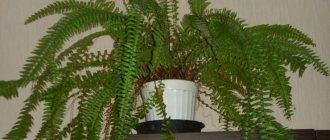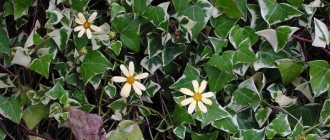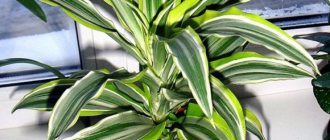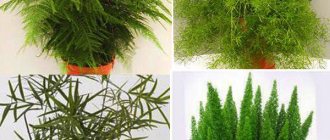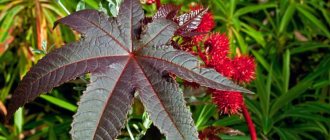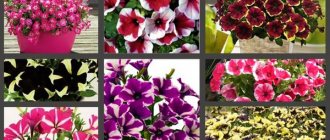You are in the Ferns , a large indoor section that contains the following plants: Pteris, Adiantum, Davallia, Asplenium, Platicerium, Nephrolepis.
Ferns have long been popular in indoor gardening. They are grown in greenhouses, flower beds, and special glass display cases.
They are planted in pots and placed on the territory of medical institutions, schools, pharmacies, offices, which makes non-residential space lively, presentable and original from the point of view of modern interior design.
Most representatives of the subsection are presented in the form of a rosette, which is formed by dissected arched leaves . Flower growers also distinguish ferns with small round-shaped leaves and lanceolate leaves. Many of them are ideal for flowerpots or hanging in other decorative vessels. Also popular are large varieties that look harmonious alone in square, round, or diamond-shaped floor flowerpots.
What flowers are there that look like ferns, what are they called, photos?
indoor or garden flower that looks like a fern
. Strangely enough, there are quite a few such flowers, but basically these are all indoor plants that really resemble a fern (some are even its species).
Nephrolepis - resembles a fern and looks very beautiful.
Davallia - the leaves of this plant are similar to fern, but they are smaller in size.
Blekhnum is also similar to a fern, but the leaves are directed upward. It is often found not only in apartments, but also on the street.
All ferns love to grow in shady places, because this is how they grow in nature. There are quite a lot of plants similar to ferns. They grow both in the garden, on the plot, and at home. Since they do not need bright light, the plant can be placed anywhere in the room: on a table, cabinet, shelf, floor, etc.
For example, there are these:
Adiantum Venus hair or Adiantum Ruddy. Its leaves look like shaggy triangles.
Asplenium nest is somewhat reminiscent of mother-in-law's tongue:
Different types of fern Nephrolepsis, which is probably most often found in homes and is most associated with ferns (sercefolia, sublime, Marisa, etc.)
In some ways it seems to me similar to the Adiantum fern. It is popularly called “curly fern” and belongs to the adiantum family. In nature, it is widespread, for example, in South America. The plant looks gentle and elegant. Some gardeners even manage to grow it at home, despite its whimsical nature.
Davallia. The plant is an epiphyte and can even live quietly in indoor conditions.
Grows in Asia, the Canary Islands and other tropics. The greenery of Davallia looks very delicate and really resembles a fern. The roots of the plant hang down from the pot and because of this it is nicknamed “rabbit’s feet”. Very unusual.
Blekhnum are decorative and unpretentious plants, very popular in apartments.
It grows quite quickly, is unpretentious, requires regular watering and periodically removes old leaves. Not very tall - 40 cm and leaf size up to 60 cm. Requires replanting every year. Does not like sunlight, place in shade or partial shade.
Polypodium is an unpretentious plant and very easily adapts to new conditions, watering should be moderate, it tolerates drought well, with excess watering it can rot, which is why there should be a thick layer of drainage at the bottom.
The plant is replanted by cutting the rhizome, usually in half, and the plant is removed to a dark and warm place for several days.
Fertilizer application
What else does an indoor curly fern need? Home care involves timely and regular application of fertilizers. The application period is spring and autumn, that is, the time of intensive growth and accumulation of green mass. Feeding is carried out once every seven days; in winter, reduce the number of feedings to 1-2 times a month.
According to all the rules of home floriculture, it is recommended to alternate mineral inorganic complexes (they can be purchased at a farm store) and organic fertilizers. However, it is better for inexperienced gardeners to completely abandon organic matter, since it is more difficult to work with and there is a risk of contaminating the soil with larvae, fungi and parasites.
Feeding is traditionally prescribed only to adults. Young specimens should be content only with those substances that are in the fresh soil after transplantation. You can start fertilizing when the fern has fully formed a strong root system.
Types of ferns
Ferns are one of the oldest plants on our planet that have retained their basic characteristics. They appeared 400 million years ago and at that time reached enormous sizes.
In the modern world, ferns are no longer so majestic and do not dominate the plant world. But, despite evolutionary changes, their diversity is amazing.
This culture is quite common in the wild and can surround people everywhere: it grows well on rocks, in swamps, in deserts, and in water. Ferns are distributed throughout the planet, but their favorite areas are those with warm and humid climates: the tropics and subtropics.
Interesting. Ferns are very popular as garden and indoor plants.
general characteristics
Despite the fact that ferns are flowering plants, they never bloom, and in appearance they can hardly be called flowers.
The structure of ferns is peculiar - the root is poorly developed and superficial. The above-ground part of the plant is unusual - it can hardly be called leaves, flowers or branches. In botany, a special name is used - fronds or flat branch. But in the process of evolution, a real leaf begins to emerge.
Plants reproduce by spores or vegetatively. At home, the simplest method of propagation is dividing the bush.
Interesting! The Fern class, or True ferns, belongs to the Fern division and amazes with its diversity - ferns are low and tall, in the form of grass, shrubs and trees, of various colors and shapes. The variety of this plant has 8 subclasses, approximately 300 genera and about 10 thousand species.
Carnivorous plants
I would single out insectivorous plants as a special group. They have only recently appeared in home collections. Their exoticism scares off most flower growers, but at the same time their originality attracts. Most often, Venus Flytrap (Dionea), Darlingtonia and Nepenthes are grown in apartment conditions.
- Cabomba: keeping in an aquarium, types and photos
So, if you want to choose the right soil, watering regime and temperature, fertilizers, replanting schedule, and propagation systems that a particular flower needs, first of all determine which group this flower belongs to.
Classification of Fern families
Order Osmundaceae
Family Osmundaceae. One of the most ancient groups of ferns. Characterized by very large leaves.
Order Hymenophyllaceae
Family Hymenophyllaceae. Characterized by very thin, almost transparent leaves. Lives in dark and very humid places.
Order Glachenillaceae
Important! Family Dipteriaceae, Matoniaceae. Endangered species. They are the remnants of an ancient family, living in New Guinea and Indonesia.
Order Schizeynye
Family Schizeaceae, Logodium. It stands out for its huge size - up to 30 m.
Order Salvinaceae
These are water ferns.
- Family Marsiliaceae. Distributed in water and coastal areas.
- Family Salvinaceae. They live on the water surface.
Order Cyathaeaceae
Family Tyrsopteris, Plagiogyria, Cybothium, Cyathaeaceae. Tree-like plants.
Order Multihorned
Family Centipedes, Shieldaceae, Onocleaaceae, Dennstedtiaceae, Kostenzoaceae, Telipterisaceae, Woodsiaceae, Derbyaceae. The most numerous subclass of culture.
On a note! Centipede or Polypodiopsid is another name for the fern.
House fern species
Due to their effectiveness and ease of care, representatives of the fern family have become popular as indoor plants. They will add zest to any interior. In addition, fern, as a house flower, improves the atmosphere in the house and purifies the air.
Popular types of indoor ferns:
- Nephrolepis. An unpretentious but beautiful compact bush. Feather-shaped fronds, soft green. Grows quickly and does not cause allergies. Care consists of regular abundant watering and spraying, providing diffused lighting, and a temperature of 18-22 degrees.
- Davallia. Original plant. Small in size - 15-20 cm, bright green in color. The main feature of the fern is the root system - the roots grow above the pot, as if enveloping it. Thanks to their pleasant fluffy structure and rare silvery color, the roots look unusual and attractive. Maintenance requirements are minimal: bright light, regular watering, light soil with a drainage system, temperature - 20-25 degrees.
- Multi-row. A very beautiful home flower, which is often found in the wild. Features of the species are the rich green color and shiny surface of the fronds. Needs constant soil moisture and a shaded place to grow. The optimal temperature is 15-25 degrees, but can withstand frost.
- Pelley. Low but spreading bush. The leaves are small and round. The shaft is dense and shaggy. The difference between the species is its adaptability to drought. Requires spraying, indirect sunlight and a temperature of 20-25 degrees.
- Pteris. Quite a popular variety of fern. It stands out for its unusual shape of branches and various leaves, more like hare's feet. The coloring is also original – green, with a white stripe in the middle. They are not much of a hassle to care for. They develop well at 13-23 degrees, but do not tolerate drafts well.
- Circomium. The shape of the plant is unusual for a fern - the leaves are round, slightly elongated at the tip, wide, very thin. It grows slowly, but tolerates dry air well. Loves shade and warmth up to 25 degrees.
A separate group are aquarium ferns - bright representatives of aquatic families. These are quite attractive plants that can decorate any aquarium and add variety to the life of fish. Well-known species of this group are Thai Vindelova, Thai angustifolia, pterygoid, Indian, Bolbitis Gedeloti.
Garden types of fern
Interesting! Ferns are clear proof that a beautiful and original plant can develop without the formation of flowers. The varied shape of the leaves, a riot of colors: from pale to bright green, interspersed with other colors will bring some zest to any garden.
Description of popular decorative types:
- Female Kochedyzhnik. It stands out with its delicate fronds of soft green color. It grows about a meter tall. Loves shade and moisture.
- Male shieldweed. The most popular decorative fern. Characterized by dark green shiny fronds. It grows a little more than a meter.
- Red rosemary. A special feature of this species is the original color of young fronds - the color of old gold.
- Polygonal bristlecone. Despite the fact that it is quite large, the leaves are delicate and delicate, and stand out for their absolute symmetry.
Exotic varieties of fern
Due to the large number and diversity of ferns, many exotic, unusual species of this culture have become known:
- Nippon kochedednik, known for its unusually colored fronds.
Varieties:
- Pictum – purple branches;
- Silver falls – silver color;
- Ursulas red – purple fern.
- Platycerium (Deer Antler, Flathorn). A very unusual species, the fronds actually resemble deer antlers in shape, which is why they began to call it that.
Interesting! Thanks to their original and unique shape, colorful colors, and ease of care, ferns have won the love and respect of many gardeners. They are able to add variety and decorate any landscape.
Indoor fern: description
Indoor fern belongs to the family of vascular spore plants. Indoor ferns are a large group of plants that differ in the shape of their foliage and the shape of the plant itself. There are decorative species whose foliage is carved and cascades down. In other species, the foliage overlaps each other, while in others it is collected in rosettes.
Ferns are an intermediate link between moss, algae and gymnosperms. They have preserved their original structure from ancient times, but were able to adapt to modern living conditions.
Their foliage can be curly, feathery, or many times dissected. The leaves that have just appeared are twisted into a spiral, and as they grow, this spiral unwinds and darkens. The root system of ferns, like many plants, is located in the soil layer.
Some tips for caring for indoor ferns
- Humidity. Water your fern only when the top of the soil is slightly dry. You can also place your pot on a tray or saucer filled with pebbles, filling the tray with water. The water will evaporate and increase the humidity in the air around the fern. Spray the fern with a spray bottle filled with warm water. Try to mist the air over the fern and let the mist settle on the leaves rather than spraying the leaves directly.
- Temperature. Most indoor fern species are tropical species, although not all require tropical conditions. Make sure the temperature in your room where the ferns are kept is around 21°C. They will not thrive in cold temperatures.
- Light. Ferns generally prefer indirect light; direct sunlight will burn their leaves. Adjust the blinds to reduce the amount of light, or move the ferns away from the window. The ideal option would be to place the plant near a window facing north. East and west windows let in too much direct sunlight.
- Pests. If you find pests such as whiteflies or aphids indoors, gently rinse the branches with water or spray them with a natural insecticide for indoor plants.
- Removing diseased fern leaves. If your plant is infected with a disease, cut off the affected areas. If your fern begins to die as a result of neglect, do the same by removing the damaged or dead part using scissors.
Characteristics of fern species
Graceful foliage, well branched, dark petioles
The foliage is forked at the base, young leaves are pinkish-brown in color.
Adiantum Venus hair
Its thin petioles look like hair, their color is light brown, the foliage is round, small, bright emerald
Grows well in partial shade, requires high air humidity, the foliage has the shape of a gladiator's sword, a vein of a darker shade runs through the center of the leaf, the edges are slightly wavy, can stretch up to 0.6 m in length
The petioles of the plant resemble wires in appearance; they are dark in color; the foliage is pinnate and has a rich emerald color.
The rhizome of this fern is hairy and creeping. On the aboveground part of the flower there are simultaneously wide and narrow foliage
The crown of this fern can grow up to a meter wide. Therefore, it requires a spacious room. The foliage is tough, the main trunk of an adult plant is well developed
The stems of this species can reach a height of up to 2.4 m. The foliage is arched, curved, carved, pale emerald green
The species is not afraid of drought and drafts. The leaves are elongated, carved along the edges, their color is dark emerald.
The foliage of this fern is similar to carrot tops, and the rhizome usually grows out from the soil of the pot.
This species requires a lot of free space, since an adult plant can reach a height of 5–6 meters. Its foliage is leathery and faded green. The trunk is powerful, dark brown in color.
Didymohlena slightly truncated
It also grows well in the shade. The foliage is shiny, leathery, small, truncated, green with a brown tint.
Grows well in the shade, but requires regular watering and high humidity. The foliage is located vertically, its edges are smooth. The stems are long and thin, covered with thin scales.
The foliage can stretch up to 0.6 m in length.
The plant reaches a height of up to 0.3 m, the rhizomes are small. The foliage is round, leathery.
Indoor fern: care at home
One of the most suitable fern species to grow indoors is Nephrolepis. This fern is distinguished by its high decorative properties and good endurance. Its foliage can be dark or light green depending on the lighting in the room and the composition of the soil in the pot.
Types of indoor ferns (video)
Soil and planting capacity
The conditions in which ferns are grown indoors are practically no different from natural ones. And first of all, this concerns the soil, which must be selected for growing any type of fern.
The basis for this mixture is leaf soil with the addition of peat, sand and humus. This soil should have a fairly high acidity and be loose. It is better to put any drainage material at the bottom of the pot, preferably expanded clay. The thickness of such a layer should be 3–5 cm. Drainage is necessary to ensure that moisture does not stagnate in the soil. Stagnation of moisture can lead to rotting of the rhizome. The first sign of such rotting is the appearance of brown spots on the foliage.
How to replant an indoor fern
Don't forget to replant your ferns. Any fern will outgrow the pot in which it was originally planted. The time between repottings will depend on the condition of your fern, but you may need to repot it into a larger pot as early as 6 months after the initial planting.
Young specimens need annual replanting. The best period for this procedure is spring. Transplantation is carried out using the transshipment method to prevent injury to the roots and reduce stress. Usually, before planting, the crop is watered abundantly or the container with the plant is placed in a basin of water. Then the container is turned over and the flower is taken out along with the soil. If the roots look healthy, then there is no point in shaking off the soil, but if there is rot, you will need to free the rhizomes from the soil.
The soil for indoor ferns is fine-grained and nutritious. You can buy special soil at a florist shop. If desired, the composition can easily be prepared independently. To do this, take turf, leaf soil, as well as peat, a little sand and humus. The ingredients are thoroughly mixed and then heated in a hot oven for 60 minutes.
Each time the pot for indoor fern is taken 3-4 cm wider than the previous one. Clay containers are an excellent solution, since clay perfectly absorbs excess moisture.
The transplant is performed according to the following scheme:
- laying a drainage layer (thickness up to 2 cm), it consists of stones, expanded clay and foam;
- half of the prepared soil is placed on top;
- then the lump of soil together with the plant is placed in a container, the roots are carefully straightened;
- The top of the pot is filled with soil and watered generously with water at room temperature.
After the procedure, the flower is placed in a permanent place where scattered sunlight will fall. Feeding is allowed only after 14-21 days.
Propagation of house fern
There are several ways to propagate house fern. The easiest way to propagate ferns is by dividing the bush. Sometimes this plant is propagated by spores. However, this process is too labor-intensive and not always effective. It is much easier to propagate this shrub by dividing the bush. And only under natural conditions do these plants reproduce only by spores.
Typically, such division is carried out when replanting a fern, so as not to further injure the plant.
When the bush along with the earthen lump is taken out of the old pot, the rhizome is carefully examined . The basal rosettes are immediately visible on it. These are babies that are carefully separated from the rhizome along with part of it. These children are given special conditions during transplantation so that they quickly take root and grow.
About ferns
Under natural conditions, the plant grows in the tropical zone of America, Australia and Asia. Although its northern varieties are also widespread. It is a herbaceous perennial with short roots and large panicles of pinnate leaves. On the back of the leaves, in small brown protrusions, there are spores. Ferns also often produce tendrils on which new young plants begin to grow.
Main diseases and pests
Usually the plant begins to get sick or is attacked by pests if it is constantly cared for incorrectly.
If the fern is watered with unsettled water, which contains a high content of chlorine, or if it is cold, then a nematode may attack it. At the same time, the foliage begins to turn yellow and fall off. Usually the only salvation is an urgent bush transplant. When transplanting, be sure to treat the fern with insecticides.
If the humidity in the room is low, the fern can be attacked by pests such as scale insects, aphids or thrips. You should spray your plants every day to avoid this. If insects do appear on the foliage, then the fern should be treated with special preparations.
Diseases, pests and possible difficulties
Varieties of blechnum fern are resistant to pest attacks and various diseases. However, with improper care and the absence of suitable conditions, the plant can be affected by harmful insects and infectious diseases.
The main mistakes when growing ferns:
- insufficient air humidity;
- unsuitable substrate;
- watering with cold, poorly settled water;
- temperature violation;
- intense lighting.
All these factors lead to yellowing of the leaf plates, the formation of spots on them and subsequent curling.

